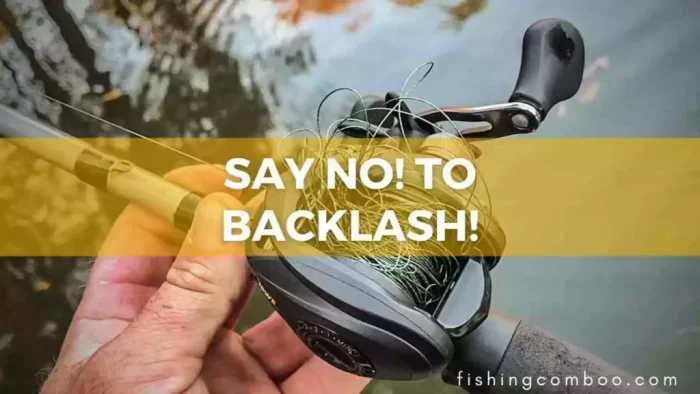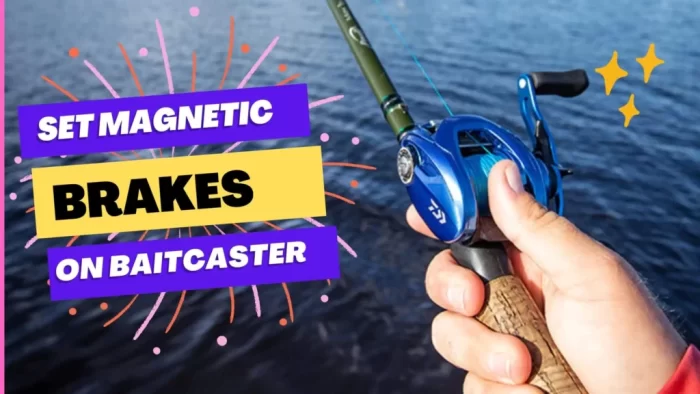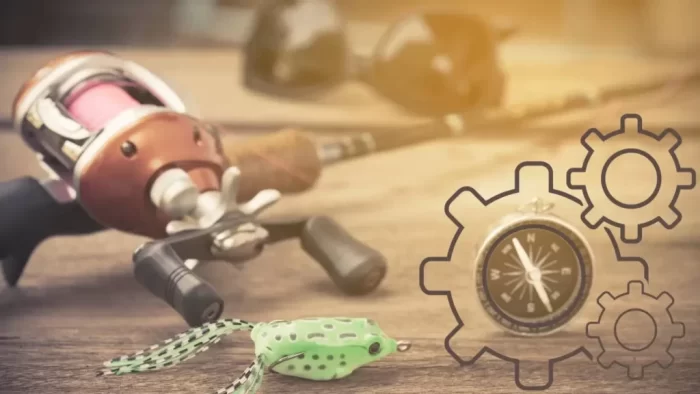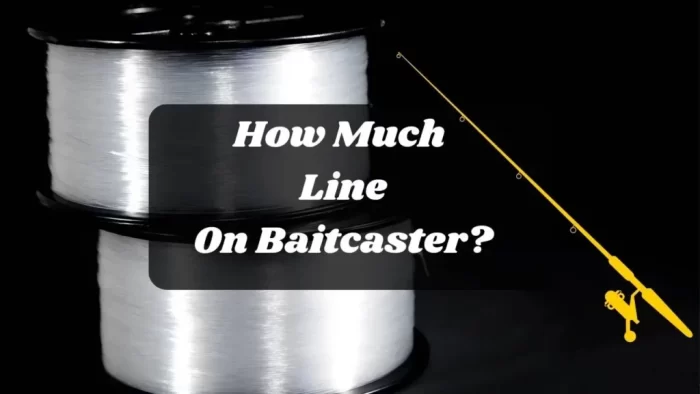
A baitcaster is a great fishing tool for experienced anglers, but it can be intimidating for beginners. One of the biggest troubles fishermen face when using a baitcaster is backlash. This occurs when the line becomes tangled after casting, and it can cause frustrating and expensive equipment damage.
No one enjoys getting backlash while fishing. It’s frustrating and can ruin your day. In fact, you’ll not experience any backlash when using your baitcaster with a little practice.
In this blog post, we’ll discuss How to Cast a Baitcaster without Backlash. We’ll also provide 10 pro anglers’ tips on troubleshooting common problems. Here’s what you need to know!
What is a Backlash?
A backlash occurs when you cast your baitcaster, and the line becomes tangled. This can happen for various reasons but is most often caused by incorrect spooling of the line or incorrect drag setting.
The other name of backlash is bird’s nest because when it happens, it resembles a bird’s nest. However, unlike a bird’s nest, a backlash is not something you want on your fishing trip.
Now let’s discuss some tips on how to avoid getting a backlash while using your baitcaster.
table of contents
- 1 How to Cast a Baitcaster without Backlash 10 Pro Anglers Tips
- 1.1 UTILIZE A HEAVY LURE
- 1.2 ADJUST THE BRAKE SYSTEM TO FIT YOUR CASTING STYLE
- 1.3 USE THE THUMB BRAKE TO SLOW DOWN THE SPOOL
- 1.4 UTILIZE A HEAVIER POUND TEST LINE
- 1.5 KEEP AWAY FROM CASTING INTO THE WIND
- 1.6 USE THE PROPER ROD LENGTH
- 1.7 ADJUST THE SPOOL TENSION
- 1.8 TRY OUT SHORT DISTANCES
- 1.9 TRY OUT AN ENTRY-LEVEL REEL FIRST
- 1.10 KEEP PRACTICING (PRACTICE MAKES A MAN PERFECT)
How to Cast a Baitcaster without Backlash 10 Pro Anglers Tips
UTILIZE A HEAVY LURE

A backlash mostly occurs when you’re using a lighter lure. The weight of the lure plays a significant role in how your baitcaster functions. Using a heavier lure when you’re baitcasting is essential to avoid backlash.
If you start with a light lure, you’ll increase the chances of backlash, and you may also damage your equipment. Heavier lures will help you keep better control over your baitcaster and minimize the risk of backlash.
Light lures should be avoided because they can easily be blown away by wind. A heavy lure will stay in place better, making it easier to control your baitcaster.
ADJUST THE BRAKE SYSTEM TO FIT YOUR CASTING STYLE
Baitcasters have a braking system that helps to prevent backlash. This system uses centrifugal force or magnets to slow the spool down as it’s spinning.
You can adjust the brake system on most baitcasters to fit your casting style. The reel’s side knob can be used to adjust this.
If you are a beginner, it’s best to start with a higher setting and then gradually move to a lower setting as you get more comfortable with casting.
Read Detailed Guide about: How to Set Up a Baitcasting Reel
USE THE THUMB BRAKE TO SLOW DOWN THE SPOOL

It is very important to use the thumb brake on your baitcaster in order to avoid backlash. The thumb brake can be used to slow down the spool, which will help prevent backlash.
You can apply this brake by putting your thumb on the spool and applying pressure. The amount of pressure you need to apply will vary depending on the fish you’re trying to catch.
UTILIZE A HEAVIER POUND TEST LINE
If you’re a beginner and casting with a baitcaster for the first time, you’ll want to use a heavier-pound test line. This will help to prevent backlash and give you a better feel for the baitcaster.
Another good option for preventing backlash is to use a braided line. Choosing the appropriate line is the most important factor in avoiding a bird’s nest. Using a braided line or fluorocarbon with a baitcaster is always a good idea.
KEEP AWAY FROM CASTING INTO THE WIND
One of the main reasons for backlash is casting into the wind. The wind will slow down your lure and cause the line to pile up. A bird’s nest is more likely to fall into your lap if you do this. When fishing in windy conditions, cast with the wind at your back. Your line will be less likely to tangle this way.
It’s much better to cast into the wind than against it, but only when you have enough experience casting a baitcaster.
Benefits of Casting into the Wind
- It allows you to cast your line further and with more accuracy
- This makes the bait appear more natural
- Most of the time, casting into the wind also helps to keep your line from being tangled
USE THE PROPER ROD LENGTH
The length of your pole will play a big role in how well you can cast your baitcaster. If you are using a rod that is too short, you will have a hard time casting accurately. The shorter the rod, the less line you can cast out. This can lead to more backlash because there is less line to control.
Fishing rods come in all different lengths, so make sure you choose one that is comfortable for you to use. Start with a rod that’s at least 6 feet long if you’re a beginner. You will have just enough length to accurately cast your line while maintaining good control.
For beginners, I recommend to use a shorter rod length. After getting hands-on practice, they could switch to a longer rod.
ADJUST THE SPOOL TENSION
Incorrect spool tension is a leading cause of bird’s nests in baitcasters. If the spool tension is too loose, the line will come off the reel too easily and become tangled. If the spool tension is too tight, it will be difficult to cast the bait, and you’ll likely get backlash. The key is to find the sweet spot in between these two extremes.
To adjust the spool tension, most baitcasters will have a knob or lever on the side of the reel. Check out many options until you discover the one that works best for you.
TRY OUT SHORT DISTANCES
When you’re first starting out, try casting at shorter distances. This will help you figure out how the baitcaster works and how much pressure to use when casting. As you get more accustomed to using the baitcaster, you can gradually increase your casting distance.
TRY OUT AN ENTRY-LEVEL REEL FIRST
One great way to learn how to use a baitcaster without backlash is to try an entry-level reel. These are less expensive because they don’t have as many extra features.
This can help you focus on the basics of baitcasting without getting overwhelmed. Entry-level reels aren’t only inexpensive but some have great features and systems that will help prevent backlash.
Check Out this Best Entry Level Reel
Read Now: How to Choose Baitcasting Reel
KEEP PRACTICING (PRACTICE MAKES A MAN PERFECT)
The only way to avoid backlash is by practicing. It might be difficult at first, but with time you’ll get better and better. Remember to keep trying, and eventually, you’ll get it!
All the tips that’re discussed above won’t work if you don’t put in the effort to practice. So, keep at it, and you’ll be able to master using your baitcaster without experiencing any bird’s nest.
Read Our Detailed Guide: Best Baitcaster Combos
Final Verdict
As an angler, you should be familiar with the inner workings of your gear. Knowing how your gear works allows you to troubleshoot problems and cast more accurately. These 10 pro anglers’ tips for avoiding backlash while casting a baitcaster will help you become a better caster and catch more fish. Do any of these methods interest you? In case you have any other suggestions, feel free to leave them in the comments section below. Best of luck out there.
Happy fishing!




